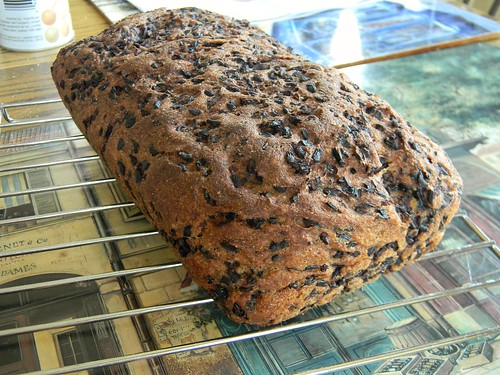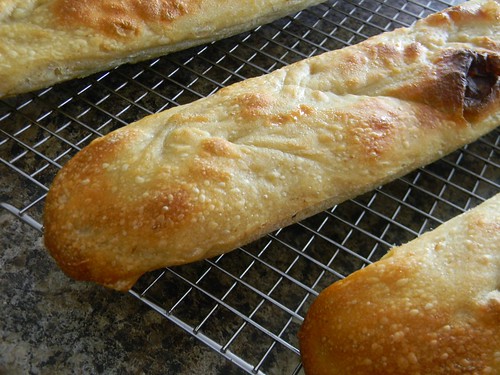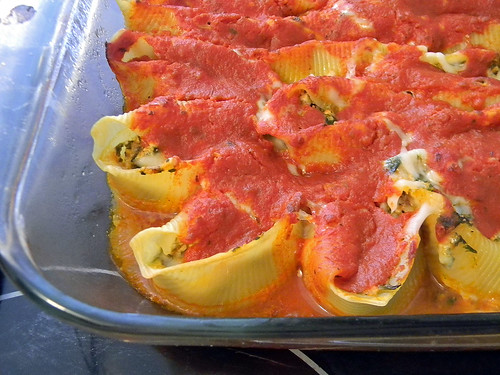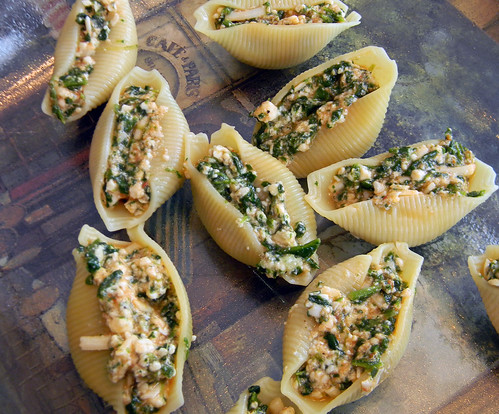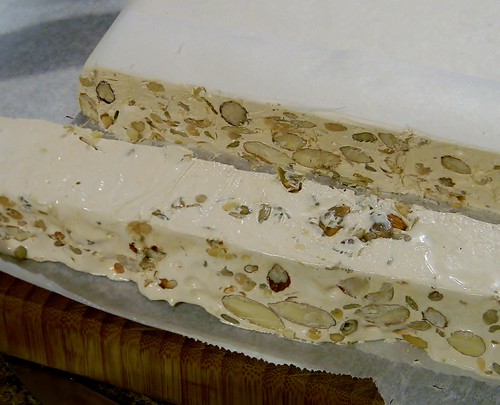The Liddabit
Sweets Candy Cookbook
Do you have a sweet tooth? While I was never a die-hard
candy fanatic, I’m definitely guilty of polishing off a box of truffles or a
giant slab of chocolate fudge cake – with a scoop of ice cream for good
measure. Making confectionery was always something that seemed otherworldly,
beyond my non-professional skills as a home cook. Then, I started seeing other
self-professed home cooks taking on the task and I was sparked to try my luck
at it. When I received The Liddabit Sweets Candy Cookbook by Liz Gutman
and Jen King to review, it seemed like the planets had aligned.
I spent hours combing through Liddabit, flagging
treat after treat I would die to gorge myself on. With seven chapters ranging
from gummies to caramels, lollipops and even my beloved chocolate, the 75
recipes each tempted and delighted me. With the December holidays approaching, Liddabit
was also the perfect way to save a little money by making a few gifts rather
than buying them. Now with Valentine’s Day around the corner, this book is a
wonderful opportunity to best the box of chocolates and show your love how much
you really care – or host an anti-Valentine’s party with a gaggle of single
friends.
On the topic of romance, the authors cleverly included a “Speed
Date the Candies” chart (p. xiii),
which was invaluable in my selection process. This chart lets the reader spot
at a glance just which candy is ideal for your tastes, time and mood – be it
boozy (like the Cherry Cordials, p. 85),
gluten free (Agar Fruit Jellies, p. 109),
shippable (Salty Peanut Taffy, p. 152)
or quick to assemble (Five Minute
Marzipan, p. 175). Information and tips critical for new candy-creators are
covered in a thorough, friendly introduction. Each chapter also has a respectable
amount of information and technique threading through it, but in no way does Liddabit
read like a pastry school textbook. The authors include a wealth of photography
(courtesy of Rachel Been) that illustrates the detail and beauty of candy
production without in any way being gratuitous.
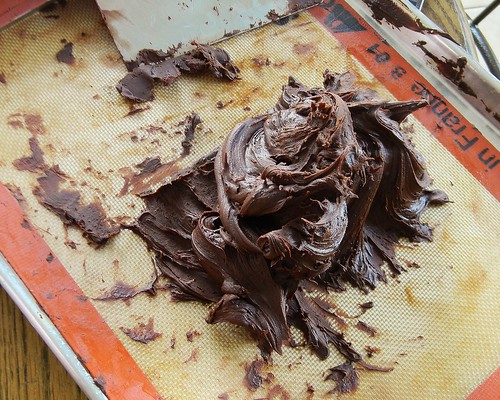 |
| "Dough" for Salted Soft Chocolates (p.67) |
Chocoholic that I am, I immediately gravitated to the
second chapter of
Liddabit – Chocolate Loves You and Wants You to be
Happy. There was no shortage of temptations – I swooned over the
Hip to be Squares (p. 99) made with
sinful Nutella, and the
Buckeyes (p. 72)
called to my salty-sweet tooth. In the end, though, the sheer simplicity of the
Salted Soft Chocolates (p.67) won my
heart. I’m not a huge fan of the chalky, chewy “fake chocolate” Tootsie Roll,
so I was concerned that these would be the same (the authors describe the texture
as similar, and they
do look like the
store-bought candy). I needn’t have worried. The chocolates are made with only 5
ingredients, including 17 ounces of dark chocolate, and by choosing the quality
and cocoa mass percentage the cook can thus control the outcome of the finished
product. I used a blend of 70% and 65% chocolates, which was perfect for the
adult set I was cooking for, but may be too intense for a child’s or
milk-chocolate-lover’s palate. I did end up using slightly more salt than
called for, but in no way were these “salty”, just well-rounded. It is a good
thing this recipe makes a
lot of
candy (as do most recipes in
Liddabit), as it is a bit of a process and
required, I found, more time, tools and strength than alluded to. While it is
in itself an easy recipe, bank on a good two days from start to finish, invest
in a SilPat, bench scraper and sharp knife, and be ready to break out the
muscle pain ointment after all the kneading, cutting and wrapping is done. The end
result is more than worth it, being a hit with almost every age set (the
youngest ones declared them too bitter), and it is a recipe I will keep in my
arsenal for future holidays.
The other recipe I tried out in
Liddabit was
Classic European Nougat (p. 145). Nougat,
as well as the various national varieties like
turrón and torrone, is a favourite confection with my Italian
stepfamily, and I wanted to give them something special for the holidays. The book
declares that this candy is “Worth It”, but I have my doubts as a non-crunchy
candy fan. By the time I attempted this recipe (which takes a solid afternoon
to make and can be expensive due to the nuts), I had become somewhat familiar
with the candymaking process. For those just beginning a journey into confectionery, I would strongly suggest making marshmallows first, as nougat is
effectively solidified marshmallow. I was prepared for the hot sugar syrup
(readers note you
will need a candy
thermometer for most
Liddabit recipes) and whipping of egg whites (you
will need a stand mixer), and had my mise en place set out and organized. However,
I was
not prepared for how stiff the whipped mixture really gets and how
sticky the finished mixture can be – the book’s direction to "stir the
nuts" into the base sounds like a simple matter. In practice, the process
was more like "try not to break your spatula / your arms". Being so stiff,
as well as so hot (almost 300
°F),
getting it into an even layer in the pan required the speed of an Olympian and
hands of asbestos. In terms of cleanup, the patience of Job and about an hour
long shower finally removed the remaining sugar residue from all corners of the
kitchen and my hair. Cutting it was one of the hardest things either my mom or
I had ever experienced, even though I knew it was a hard candy it was
definitely a two day, hammer and knife job. It was well received though, and
lasts almost indefinitely in a cool, dry place, so if you have the patience and
strength it is perfect for gift giving.
While I can’t say for sure that Liz Gutman and Jen King will make candy as easy
as flipping a switch with
Liddabit Sweets Candy Cookbook, this book is
definitely a stellar primer for the candy-curious. There is enough variety in
the pages to allow both complete neophytes and experienced cooks to make professional
looking confections with a little sugar, heat and elbow grease. I can’t wait to
get the sweet kitchen back up and running – there are still 73 recipes I need
to savour!
Available on Amazon
